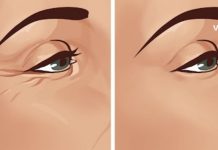Migraine is one of the most common chronic, organic, and primarily hereditary diseases. It is typically characterized by intense, recurrent headaches that severely impact a person’s ability to work or function normally. Around 1 billion people worldwide suffer from migraines. In terms of years lived with disability, migraine ranks third globally, following lower back pain and depression. It is three times more common in women than in men, often begins in childhood, but can manifest at any age.
The most common type of migraine is the one without aura, also known as a typical migraine. This form occurs in three distinct phases:
1. Prodrome Phase (Early Warning Stage):
This stage begins a few hours to a day before the migraine attack. During this time, the person may experience subtle signs that a migraine is approaching. Common symptoms include:
- General fatigue
- Difficulty concentrating
- Frequent yawning
- Sensitivity to light (photophobia)
- Irritability
- Constipation
These are early neurological symptoms that many people overlook but are actually the body’s warning signs that a migraine is on the way.
2. Headache Phase (Main Attack):
This is the most debilitating part of a migraine. It typically lasts a minimum of 4 hours and can go up to 72 hours. The pain is usually:
- Unilateral (affecting one side of the head)
- Throbbing or pulsating in nature
- Moderate to severe in intensity
It is often accompanied by:
- Nausea or vomiting
- Sensitivity to light, sounds, or smells
- Dizziness
- Brain fog or slowed thinking
- Ringing in the ears (tinnitus)
- A strong urge to isolate oneself in a quiet, dark room
Many sufferers report relief when applying cold or warm compresses to the forehead. Others find that gently pressing or tapping their head brings a strange sense of comfort.
3. Postdrome Phase (Recovery Stage):
After the headache subsides, the struggle isn’t over. Most individuals experience a sort of “migraine hangover”, which may include:
- Anxiety or mood swings
- Drowsiness or fatigue
- Frequent urination
- Intense cravings for sweets
- Muscle weakness
- Neck pain or tightness
This phase may last for several hours or even an entire day, depending on the severity of the attack.
A Natural, Fast-Acting Remedy for Migraine Relief
So, the question is: How can we relieve migraines quickly and naturally—without medication?
After trying numerous methods over the years, one simple natural remedy has never let me down. Since incorporating it into my routine, I rarely ever turn back to pills. The best part? It requires just one simple ingredient: salt—specifically high-quality Himalayan crystal salt.
Why Himalayan Salt?
Himalayan salt is considered the healthiest salt in the world. It contains 84 trace minerals, electrolytes, and elements. That’s quite astonishing, especially considering that modern science has only discovered 118 chemical elements in total. The minerals in this salt help:
- Reduce the severity of migraine symptoms
- Boost the immune system
- Increase energy levels
- Balance serotonin levels in the brain
- Restore the body’s pH and electrolyte balance
These health benefits make Himalayan salt a powerful, natural aid for those suffering from chronic migraines.
How to Use This Remedy:
The method of preparation is incredibly simple. All you need are three ingredients:
- A glass of water (about 250 ml)
- The juice of half a lemon
- Half a teaspoon of Himalayan salt
Mix these together thoroughly and drink the mixture immediately.
Many people report that their migraine fades within minutes, sometimes disappearing entirely. While this may sound miraculous, there is a logical explanation: the rapid rebalancing of electrolytes and minerals helps stabilize the body’s neurological activity, reduces inflammation, and relieves pain.
Final Thoughts:
While migraines can be incredibly painful and disabling, natural solutions do exist. This particular method is not only cost-effective and easy to implement but also avoids the side effects associated with pharmaceutical medications. However, it’s important to remember that migraine triggers vary from person to person. Some people may find relief with this method, while others may need to experiment with different lifestyle or dietary changes.
As with any health concern, it’s wise to consult with a healthcare professional for a personalized diagnosis and treatment plan—especially if your migraines are frequent or worsening.
Still, if you’re looking for quick, drug-free relief, this salt-and-lemon water remedy is certainly worth trying. It’s simple, natural, and for many—truly life-changing.


















